- rentals@avlsrentals.com
- 1625 Greenleaf Ave, Elk Grove Village, Illinois, 60007
The Ultimate Guide To Stage Scenic Truss Rentals
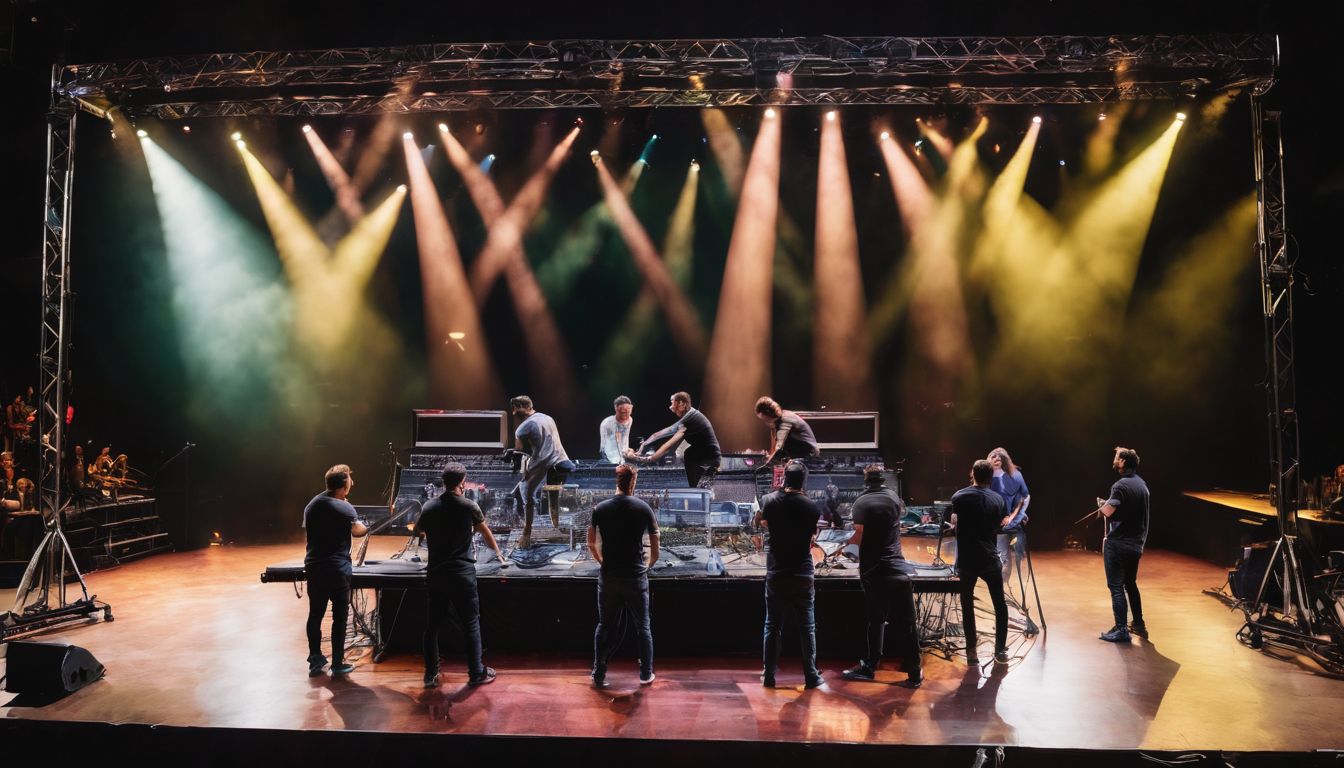
Struggling to bring your stage vision to life can be quite the challenge. Truss rentals form the skeleton of impressive stage designs, providing crucial support for lighting and other elements.
Our guide is poised to take you through each step—from selection to set-up—to ensure your event shines without a hitch. Dive in, and let’s transform your next production into a showstopper!
Key Takeaways
- Trusses are essential for supporting stage lights, sound systems, and decorations. They can handle heavy loads and come in different types like box, triangular, flat, circle, and tower trusses.
- When choosing a truss rental, consider the venue’s size and weight capacity. Also think about the shape of the truss—some are better for certain setups than others.
- Safety is very important with truss rentals. Always follow safety guidelines and check that your rental has all the right certifications.
- Building a truss requires careful assembly. Make sure to lay out parts clearly and double – check connections when putting it together.
- Don’t forget to get insurance for your event. You’ll also need required permits from your venue before setting up any structures.
Understanding Truss Rentals
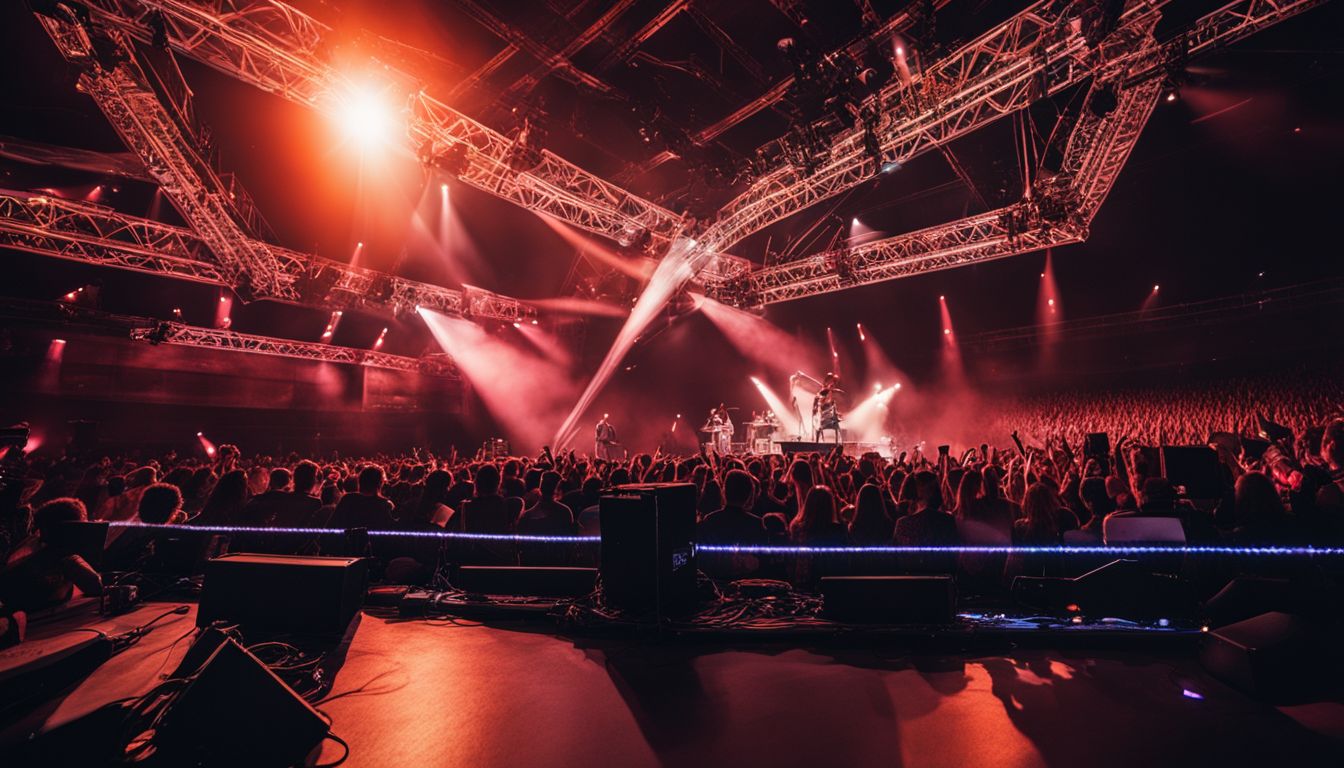
Dive into the world of truss rentals and discover the backbone of any stage design—these versatile structures aren’t just for support; they’re a canvas for creativity. Let’s unpack what trusses are all about, from their fundamental role to the various shapes and forms that can transform your event space into a spectacle.
Definition of a Truss
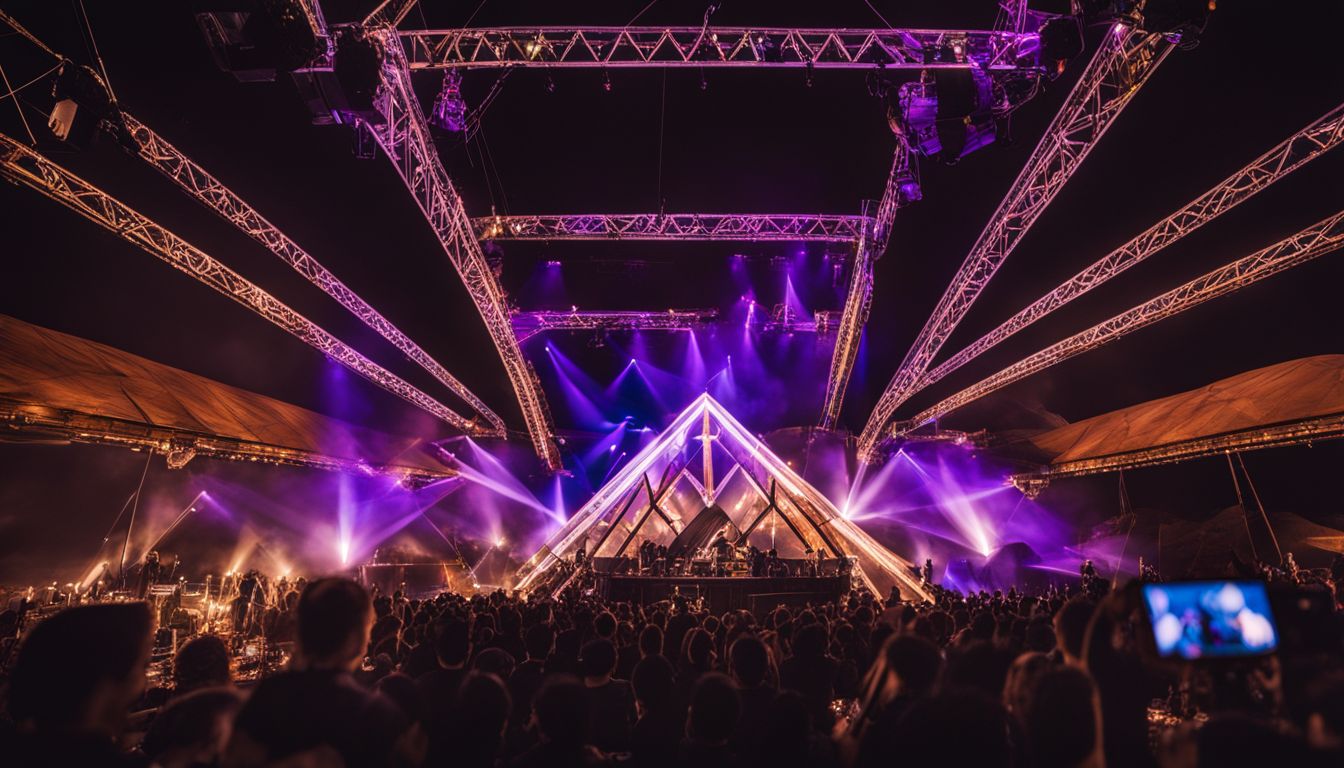
A truss is a strong and lightweight frame made mostly of triangles. These triangles are connected to create a rigid structure. Trusses can support heavy loads, like lights, sound systems, and decorations at events.
They’re usually built from metals such as aluminum alloys to withstand weight while being easy to move and set up.
Truss designs vary for different needs—box trusses are solid and sturdy, while triangular trusses use less material but still offer strength. Flat trusses work well for simple set-ups or as the base for more complex structures.
Each type comes with its own benefits depending on the event’s demands.
Different Types of Truss Structures
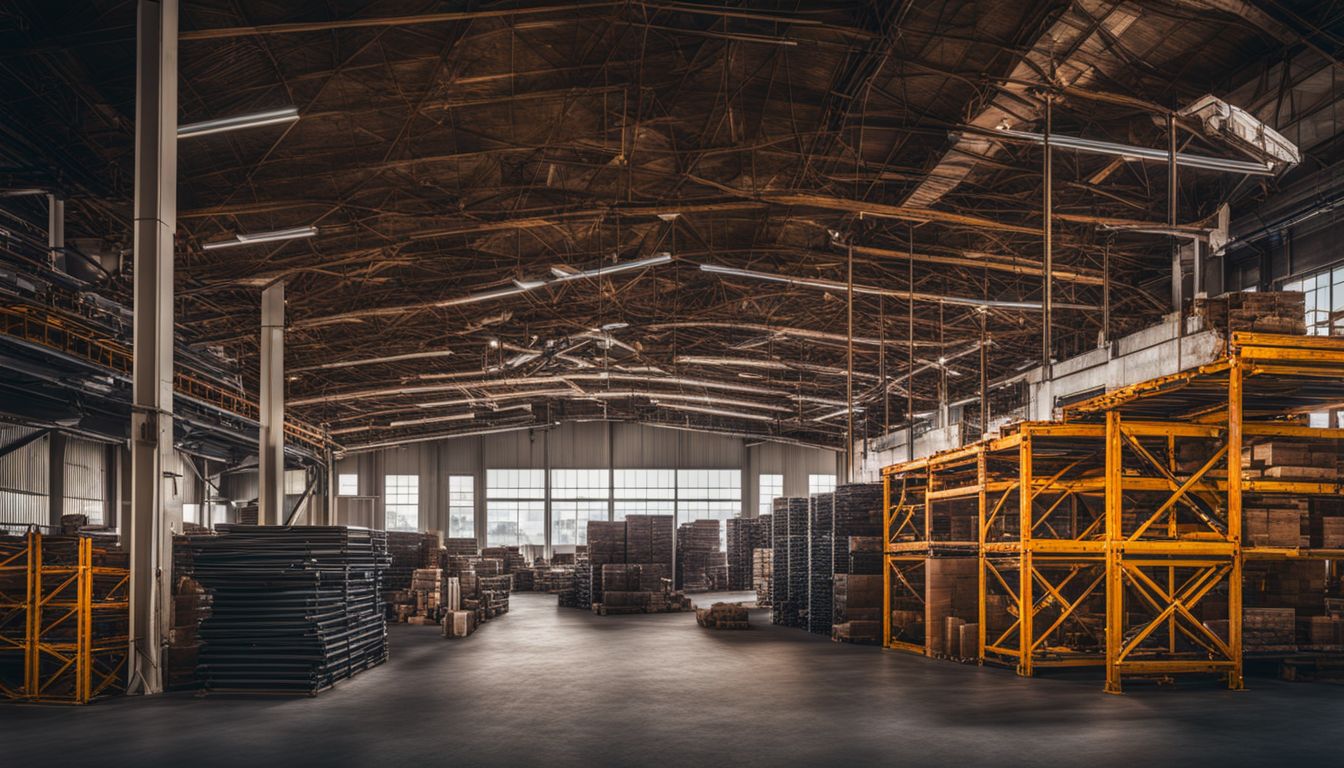
Trusses form the backbone of event stages. They provide support for lighting, audio, and visual equipment. Here’s a look at different truss structures you can rent:
- Box Truss: This is your heavy lifter. It’s shaped like a square and great for big events. It holds lots of weight and is often used to hang lights and screens.
- Triangular Truss: This one has three sides. It’s lighter than box trusses and costs less too. Use it when you need something strong but not too heavy.
- Flat Truss: Think of this as your floor runner. It lies flat, making it perfect for creating stage outlines or mounting things closer to the ground.
- Circle Truss: Want to wow your crowd? Get a circle truss. It goes above the stage in a ring shape. Lights and effects hung from it can make your event feel magical.
- Tower Truss: These are tall and stand up straight. Use them for signs or screens that you want people to see from far away.
- Backdrop Trusses: Set these up behind your main event space. They’re good for hanging backdrops, fabric, or even led lighting to set the mood.
The Importance of Lighting in Stage Scenic Truss Rentals
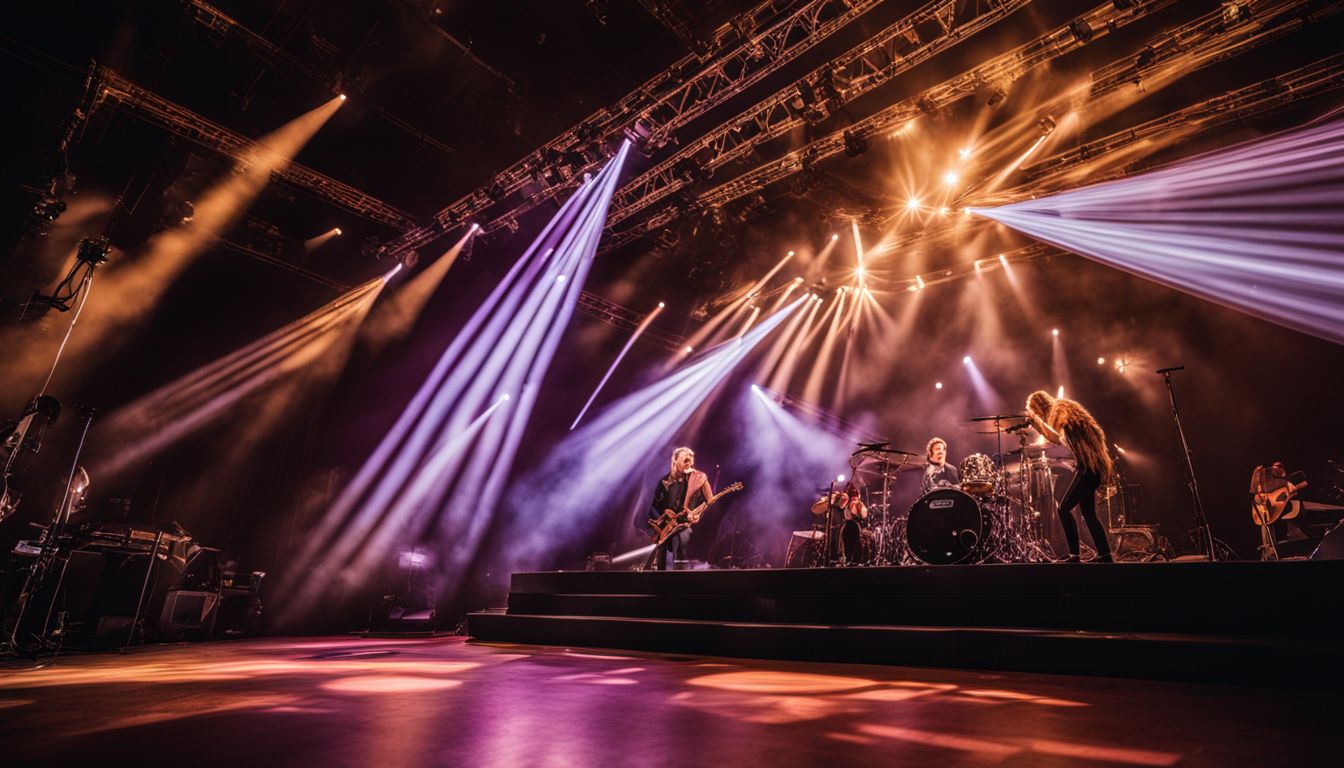
When we talk about transforming an ordinary stage into a visually stunning experience, lighting truss rentals are the secret heroes. They not only provide structural support but also serve as the backbone for intricate lighting designs that can make or break your event’s aesthetic impact.
Description of Lighting Truss
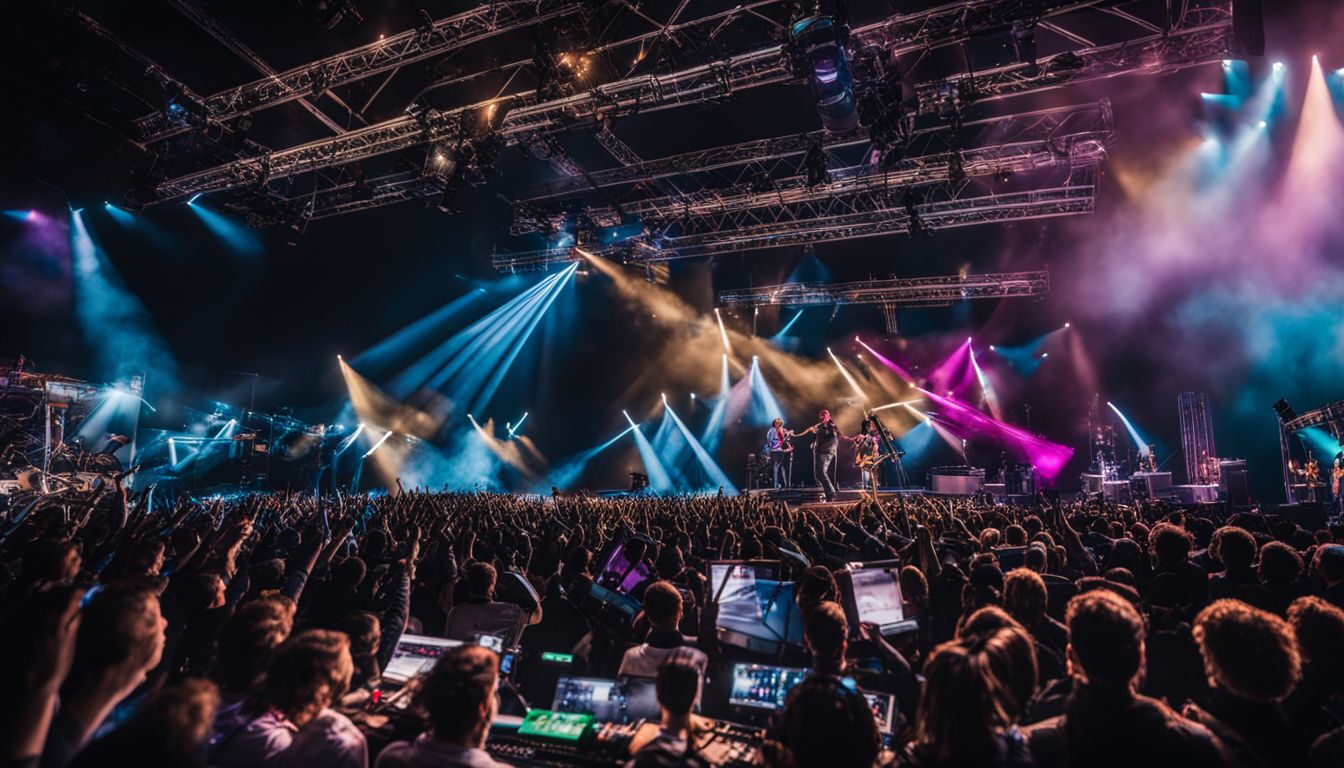
A lighting truss is like the backbone of your stage’s light show. It’s a sturdy, metal framework that holds all sorts of lighting equipment. Think spotlights, lasers, and colorful effects—all hanging up high for everyone to see! These trusses come in different shapes: box, triangular, even flat ones for backdrops.
Each type fits certain lights best.
Getting the right one means your event’s lights will dazzle without a hitch. They’re built tough so they can carry heavy loads; making sure those bright beams and flashy gobos stay put.
And because safety is key, always check that your rental has the proper certifications—it keeps everything secure overhead while the crowd enjoys the spectacle below!
Benefits of Lighting Truss
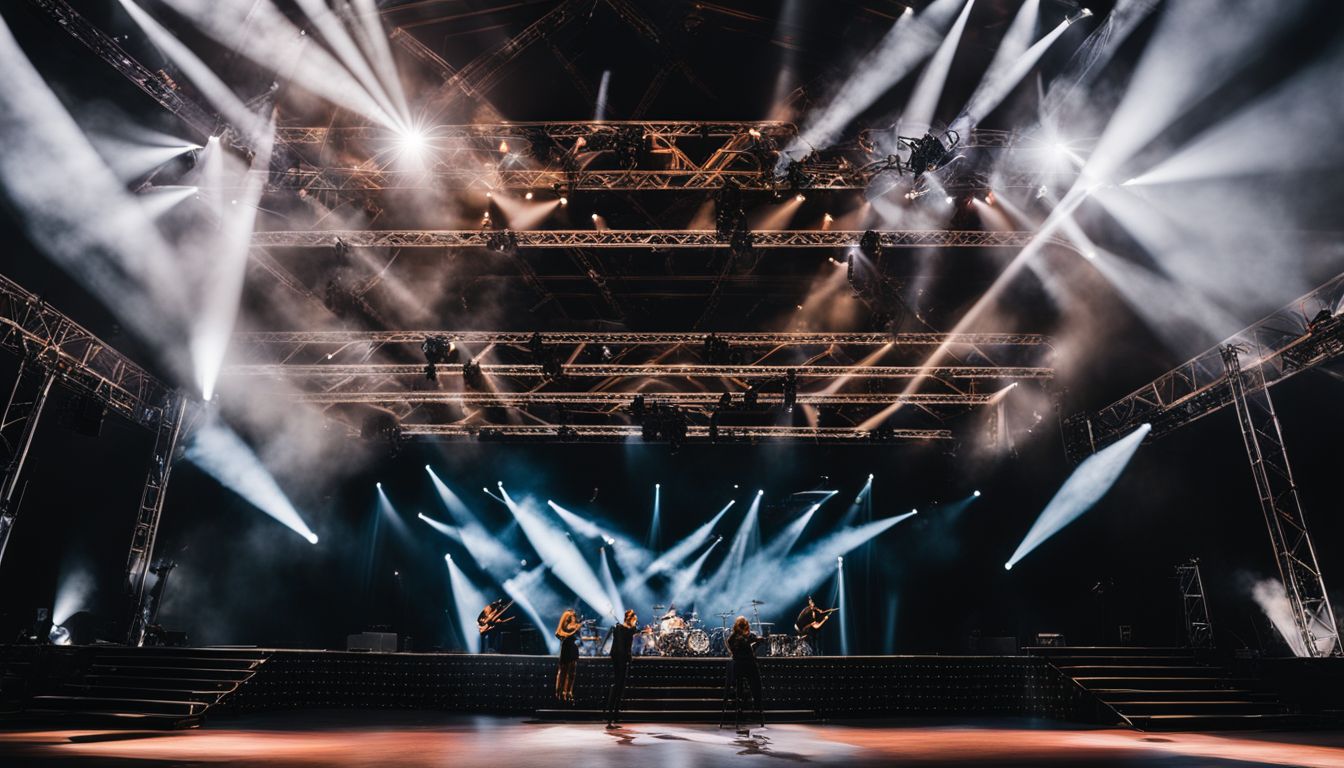
Lighting trusses bring your event to life, creating an atmosphere that captivates the audience. They hold lights in perfect positions, helping to deliver stunning visual effects. Whether it’s a concert or corporate gathering, these structures provide versatility and durability for any show.
They allow quick changes and support various lighting designs.
Truss rentals can transform a stage into a dynamic space with architectural lighting highlighting key areas. From dramatic spotlights to soft ambient glows, they offer endless possibilities for creativity.
Stage productions benefit from these sturdy frames as they safely suspend audio visual equipment above performers and guests, ensuring both safety guidelines are met and the visual experience is enhanced.
How Truss Rentals Can Enhance Your Stage Production
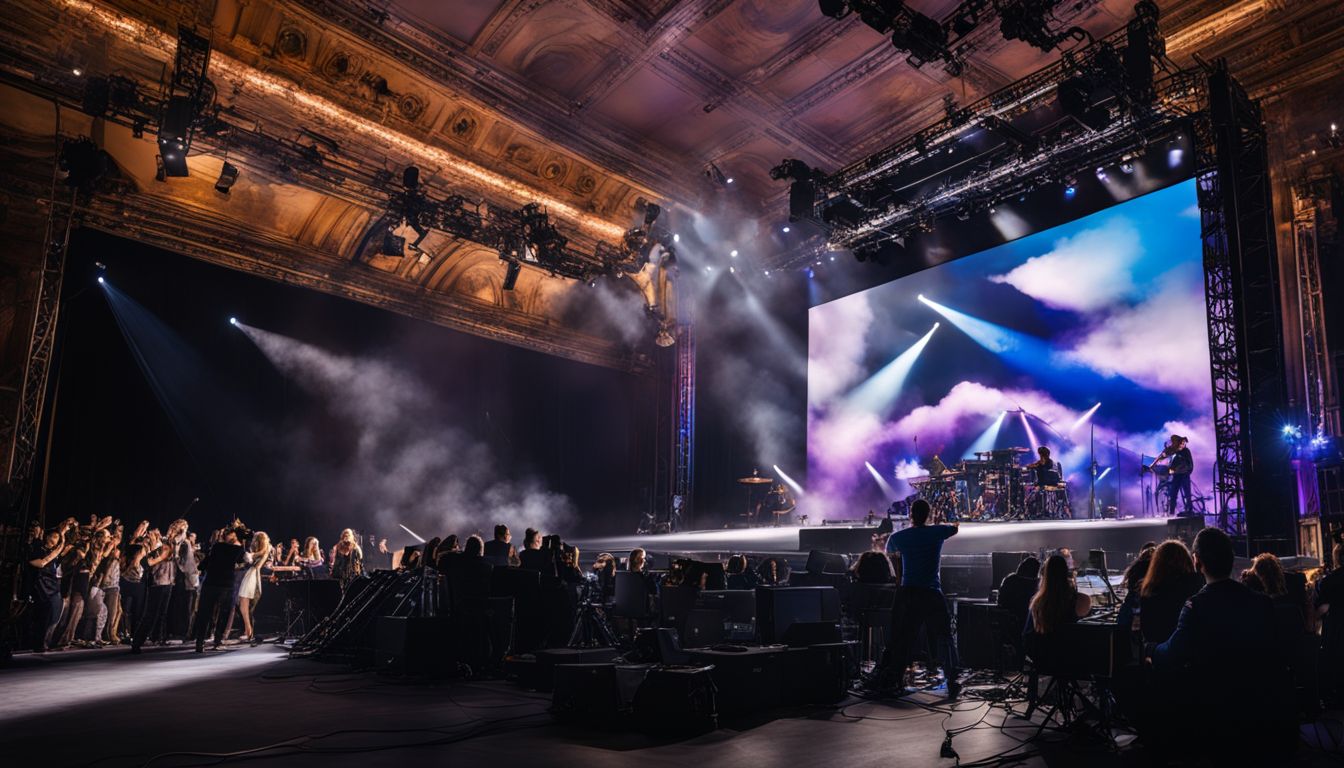
Truss rentals can take your stage design to the next level. With these sturdy structures, you can hang lights, video screens, and speakers to create an immersive experience for your audience.
They make it easy to customize each show’s look without buying new equipment every time. Imagine being able to change scenes quickly with dynamic backdrops or have aerial performers safely suspended above the stage!
Using trusses also improves safety and stability during events. They are designed by structural engineers to hold heavy loads securely. Your production gains a professional edge with high-quality lighting and sound perfectly positioned for impact.
Plus, renting means you don’t worry about storage space or maintenance—leaving more room in your budget for creativity!
Steps to Choosing the Right Truss
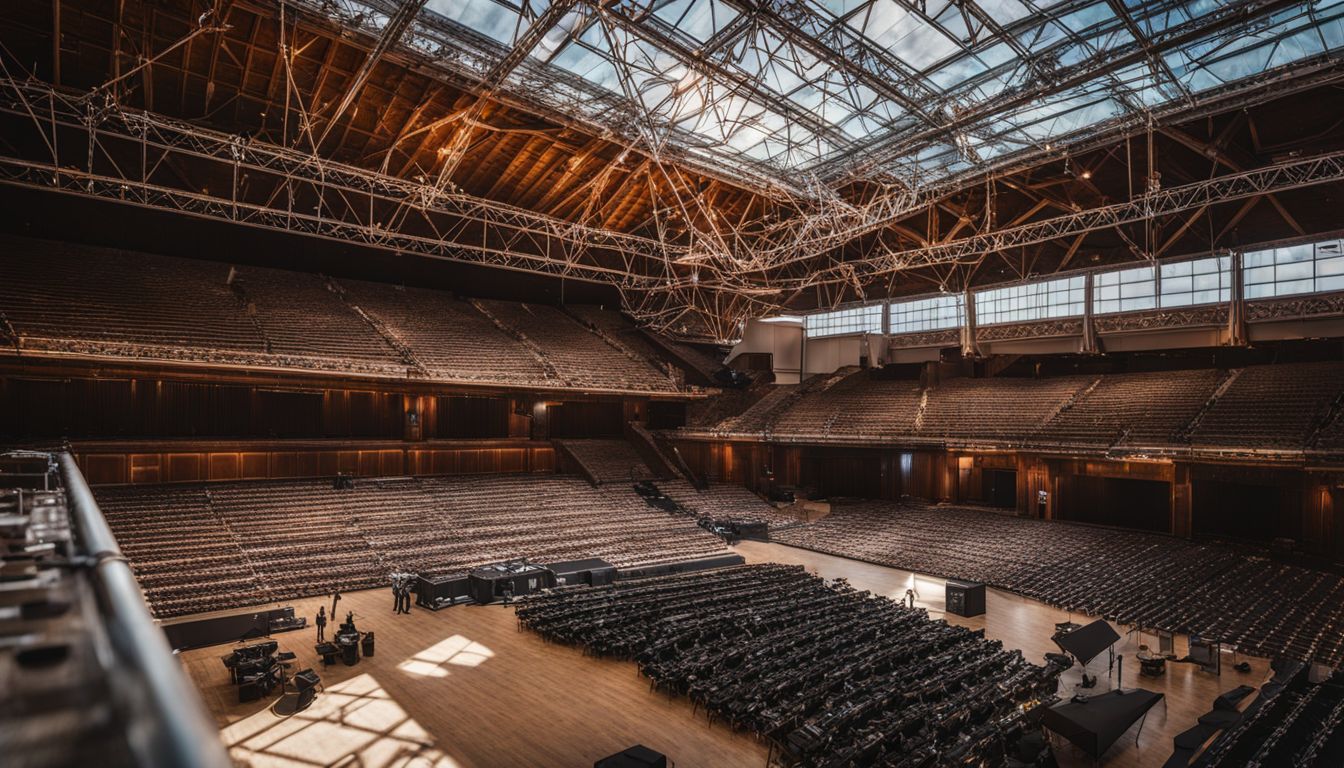
Selecting the perfect truss might seem daunting, but it’s all about tapping into the specifics of your event. You’ll want to decode venue logistics and pinpoint a truss that not only fits spatially but also can safely handle the dynamic demands of your show-stopping performances or presentations.
Assessing Venue Requirements
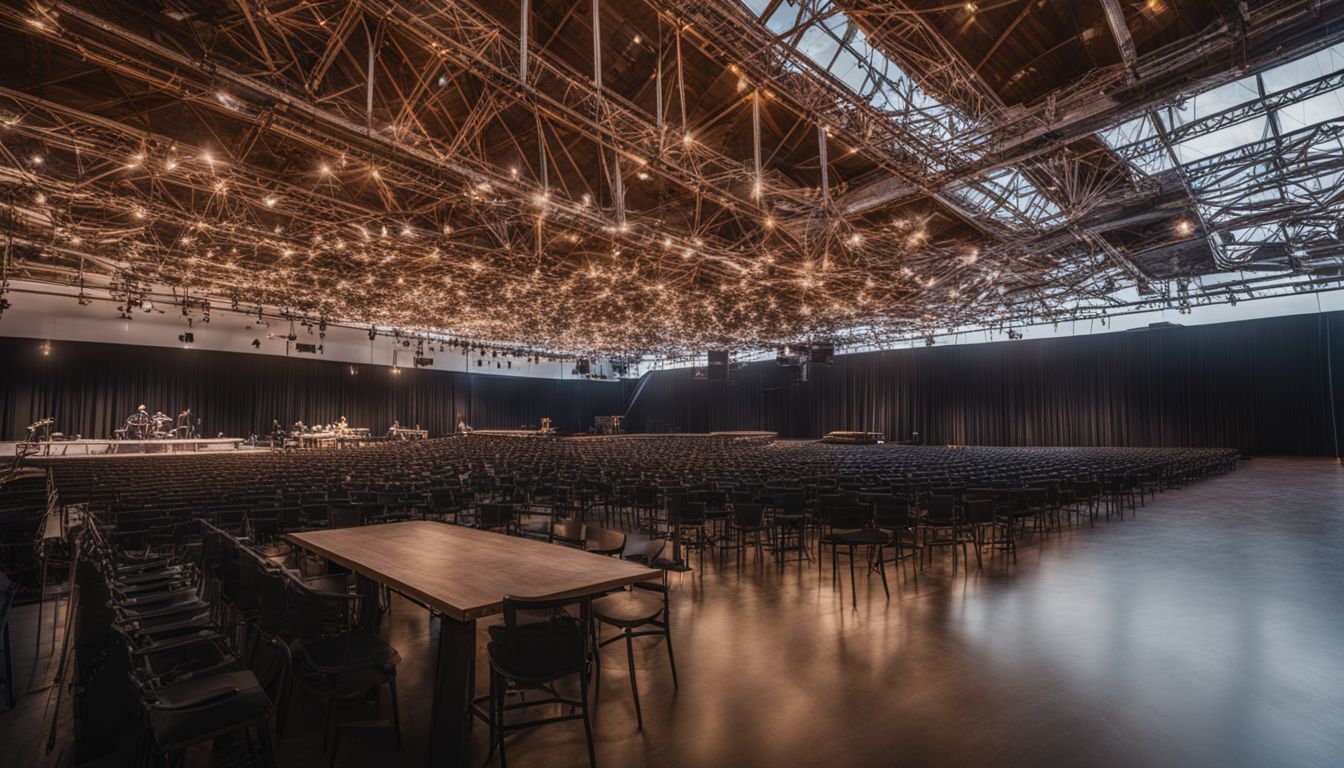
Check the venue’s size first. You’ll need to know if the truss fits well. Look at ceiling height, stage width, and any obstacles like beams or lights. This ensures your truss structure won’t be too big or small for the space.
Next, find out about load-bearing capacity. Your event planning hinges on this detail! The venue must handle the weight of your trusses plus any lights and accessories you add on. Don’t forget concrete blocks or other supports if needed.
Make sure to understand all permits required by the venue too. Avoid fines and delays by getting this right from the start.
Lastly, plan how you’ll get everything there safely—truss parts can be large and heavy! Proper transport avoids damage that could derail your setup process.
Always double-check these details early in your rent for event process to keep things running smoothly!
Understanding Weight Capacity and Distribution
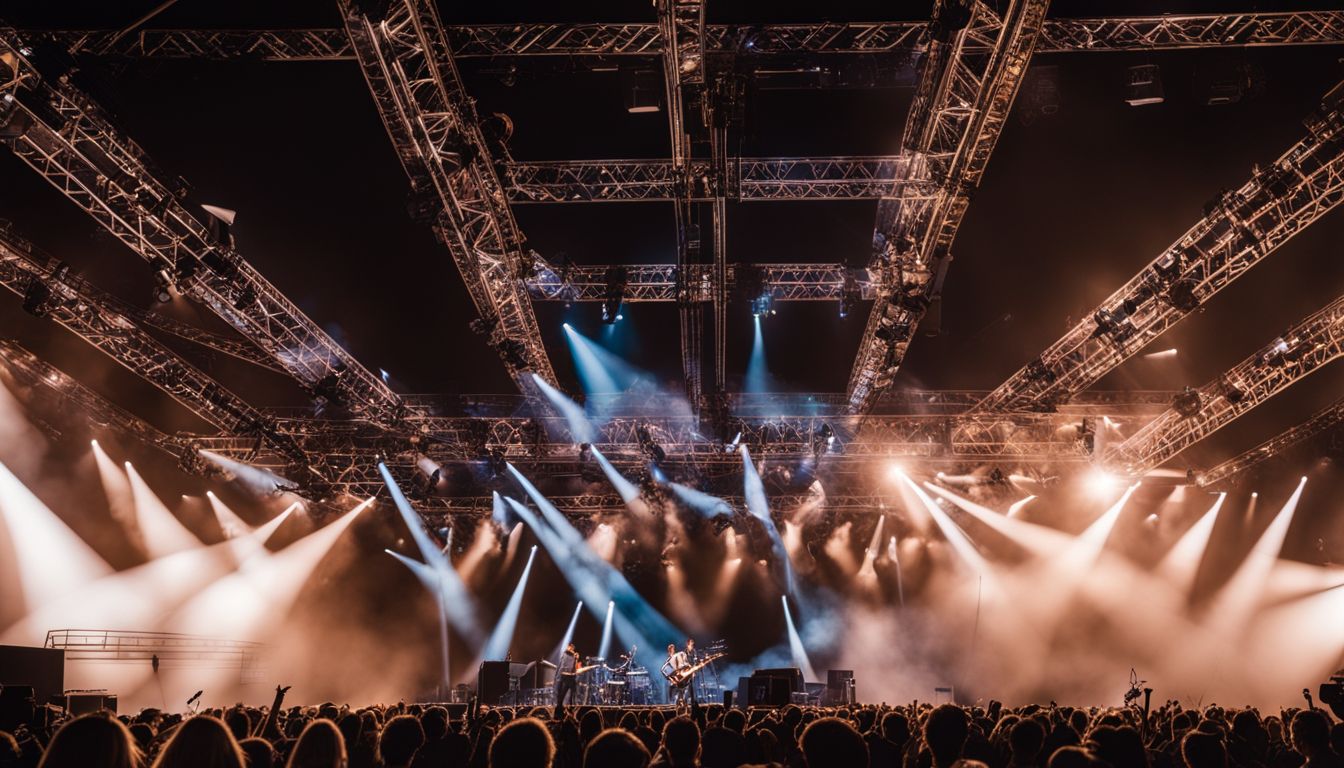
It’s vital to know how much weight your truss can handle. This tells you what lighting and sound gear it can support safely. Each truss has a maximum weight capacity, including the total of all lights, speakers, and other equipment.
You’ll also need to think about how this weight spreads out across the truss.
Make sure your load is even to keep everything safe. Don’t put too much on one side or in one spot. If you do that, your structure might tip over or get damaged. To prevent accidents, balance your subwoofers, lights, and accessories throughout the entire length of the truss evenly.
Proper distribution means no surprises during your event.
Considering Shape and Size of Truss
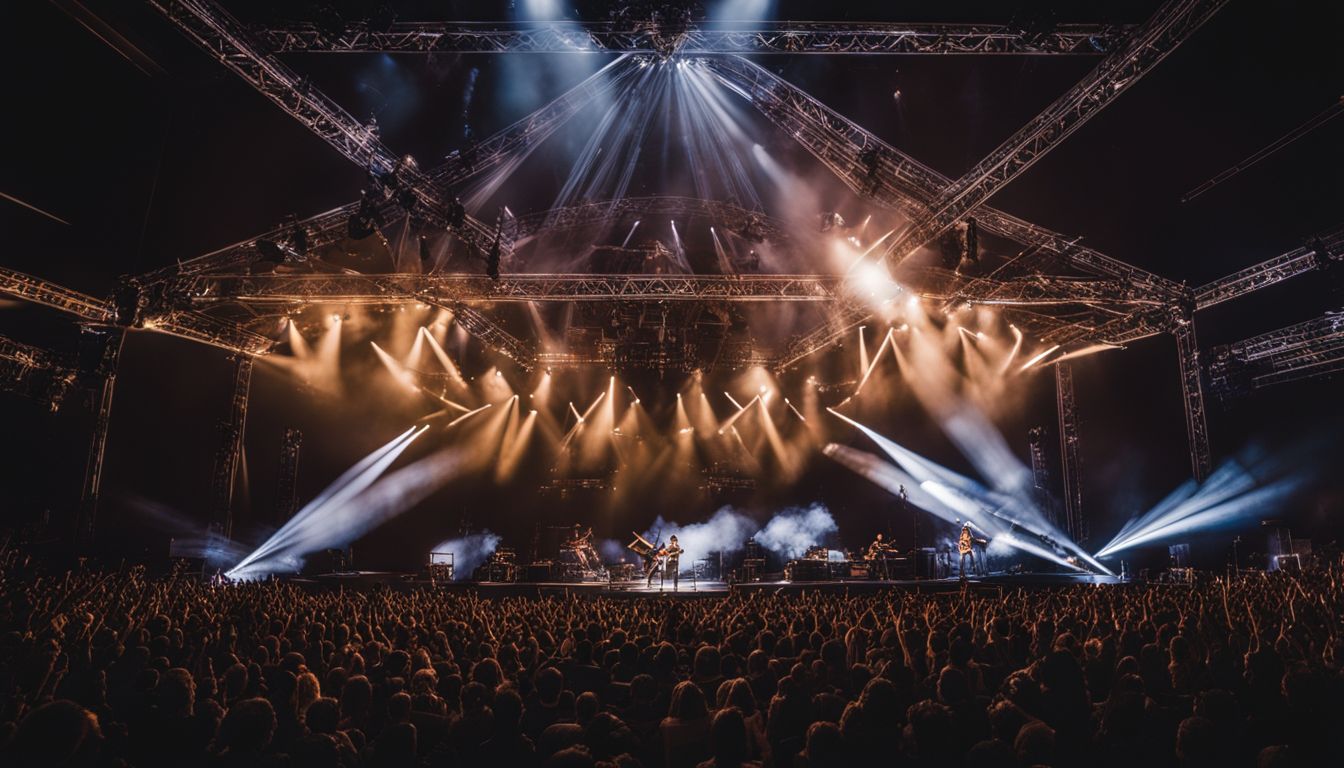
Choosing the right truss shape is crucial for your event’s success. Box and triangular trusses are sturdy options for heavy lighting setups. Flat trusses work well when space is tight, and backdrop trusses create impressive backgrounds.
Think about what you want your stage to look like and pick a shape that fits.
Size matters too—make sure the truss can handle your event’s weight demands. Check if it meets structural integrity standards for safety. You need a strong foundation for all those lights and speakers! Pick a size that balances your needs with the venue’s capacity.
This will help everything go smoothly on the big day.
Common Mistakes to Avoid with Truss Rentals
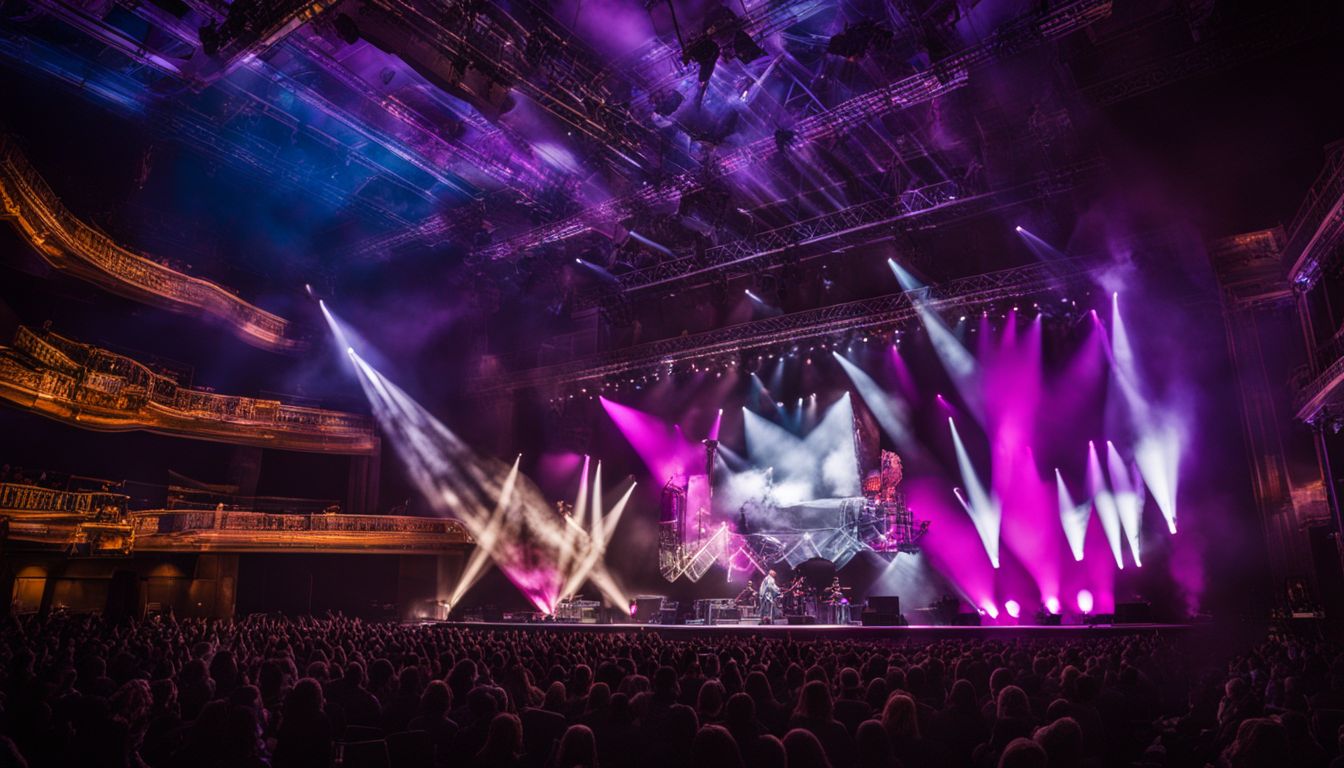
While diving into the world of truss rentals, it’s easy to get caught up in the excitement and forget a few critical steps—don’t let common slip-ups derail your stage masterpiece; uncover these pitfalls and learn how to sidestep them with our essential guide.
Ignoring Safety Standards and Guidelines
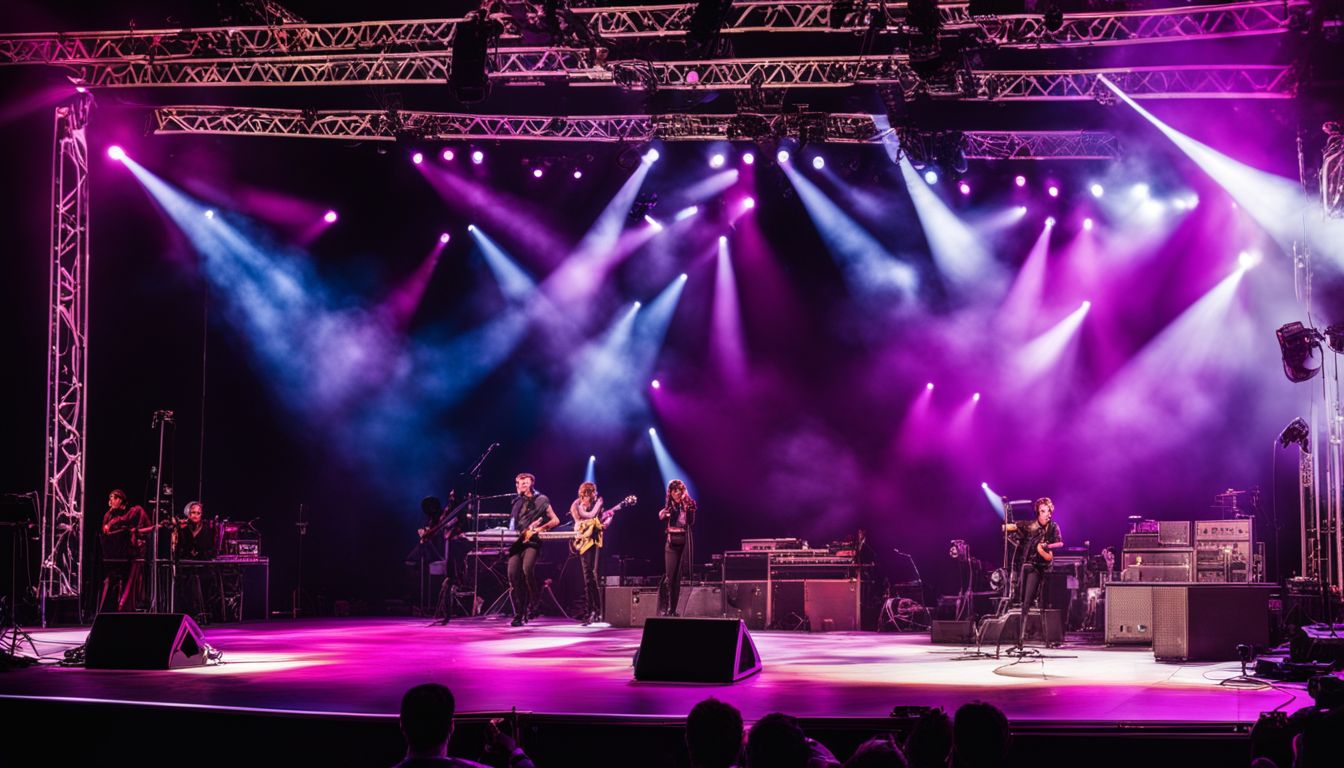
Safety standards and guidelines are like a rule book for setting up your stage truss. Think of them as the best way to keep everyone safe. If you ignore these rules, bad things can happen.
Accidents or damages might occur if the truss rental company’s safety certifications and insurance get overlooked. It’s crucial to check that they follow all the safety measures.
Imagine setting up a big event without knowing how everything works together for safety—you’re asking for trouble! Not following guidelines could lead to mishaps during your show or event.
Make sure you understand weight capacity, where each part goes, and how it all gets secured in place. Keeping these points in mind helps prevent potential problems before they start.
Overlooking Installation and Tear-Down Procedures

Setting up and taking down the truss is a big deal. Get it wrong, and your event could face delays or even danger. Our team knows this well; that’s why we offer full services. We deliver, set up, operate, tear down, and pick up everything you need.
This means you don’t have to worry about the details.
Many people forget how complex these structures are. Trusses come with their own rules for installing and dismantling safely. If you ignore these steps, accidents can happen. You could damage the equipment or worse—hurt someone.
Play it smart and use our expert help so your show goes off without a hitch!
Neglecting Insurance and Venue’s Permits Regulations
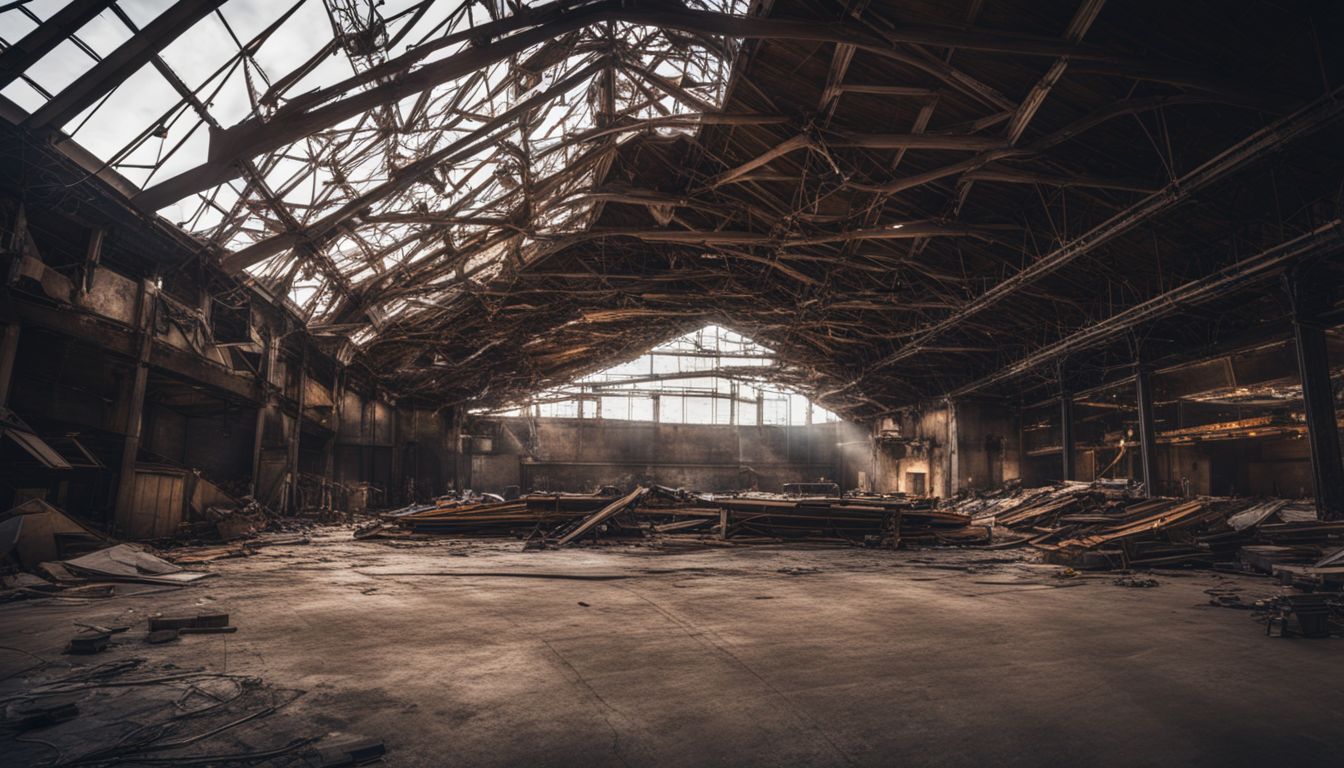
Check the rules before setting up your truss structure. Venues often have strict permits and regulations. If you ignore these, your event could face big problems. You might get hit with fines or even be forced to stop your show.
Always make sure you have the right paperwork done for your venue.
Insurance is also key for any truss rental. Accidents happen, and when they do, costs can be huge. With insurance, you’re protected from paying too much if something goes wrong. Make sure your truss is covered so a mishap doesn’t ruin your budget or event plans.
Tips for Building and Installing a Truss Structure

Creating that perfect stage setup isn’t just about snagging the best truss rentals—it’s about putting them together with expertise. There’s an art to building and installing a truss structure, and we’ve got some savvy tips to ensure your scenic design stands strong, looks spectacular, and provides an unforgettable experience for your audience.
How to Assemble a Lighting Truss
Assembling a lighting truss is like building a giant puzzle. Each piece must fit perfectly for your stage to shine.
- Find a clear, flat area to lay out all the truss sections and accessories.
- Check every part against your inventory list to ensure nothing is missing.
- Start by connecting the base plates or stands to the first truss section.
- Carefully read the manufacturer’s instructions on how to attach and secure the connections.
- Use the proper bolts and pins for joining sections—don’t substitute hardware that’s not meant for your truss.
- Attach all horizontal truss pieces before moving on to vertical or angled sections.
- Ensure that chords face the right way; they are the main structural elements running along the sides of each truss section.
- Gradually build upwards, securing each segment before adding another.
- Add crossbars or diagonal braces to give extra support and stability where needed.
- Double – check all connections are tight and secure with no wobble or play in any joints.
- Attach stage lighting fixtures, making sure you distribute weight evenly across the truss structure.
- Connect any automated rigging systems or other technical equipment following safety guidelines.
- Give everything one last inspection before powering up lights, especially checking welded points for security.
- Keep your work area tidy, placing tools back after use to avoid tripping hazards.
How to Install Stage Truss
Installing a stage truss is like building a giant puzzle. You need the right pieces and a good plan to make it all fit together. Here’s how to do it:
- Check all your parts before you start. Make sure you have every truss piece, bolt, and accessory.
- Look at the venue layout. You need to know where the truss will go and how it fits in the space.
- Lay out the truss sections on the ground. Arrange them in the order they’ll be assembled.
- Connect truss sections with bolts using proper safety gear. Always wear gloves and protective eyewear.
- Get some friends or team members to help lift each section. Trusses can be heavy and large.
- Use lifting equipment for higher structures. Follow manufacturer guidelines for safe lifting practices.
- Secure connections with locking pins once lifted into place. This keeps everything stable.
- Attach lighting fixtures and other accessories before raising the truss when possible. It makes attaching things easier.
- Ensure that weight is evenly distributed across the structure to avoid tipping over or collapse.
- Double – check every bolt and connection point once more after everything is in place.
Conclusion

Stepping up your stage game is easy with the right scenic truss. Remember, whether it’s for shining spotlights or hanging decorations, these strong frames are key. Pick wisely and plan ahead—your show will dazzle and stand safe.
Get ready to light up the stage; let those trusses transform your event into a spectacular experience.
Discover how a well-chosen truss can elevate your event by visiting our detailed guide on how truss rentals can enhance your stage production.
Create Your Next
Event with
AVLS Rentals
Complete our request form below and get your event started.

Experience Unmatched Quality with AVLS Rentals
Discover excellence at AVLS Rentals, your premier destination for the exquisite Stage Scenic Rentals and Truss Rental solutions.
Quick Links
Locations we Serve
- AV Rental Chicago
- AV Rental St Louis
- AV Rental Atlanta
- AV Rental Austin
- And More. . .
Contact Info
- (773) 457-3544
- rentals@avlsrentals.com
- 1625 Greenleaf Ave., Elk Grove Village, Illinois, 60007
Follow us:
- Terms & Conditions
- Privacy Policy
- Cookie Policy
- My Account
Copyright © avlsrentals.com 2025 All Rights Reserved.